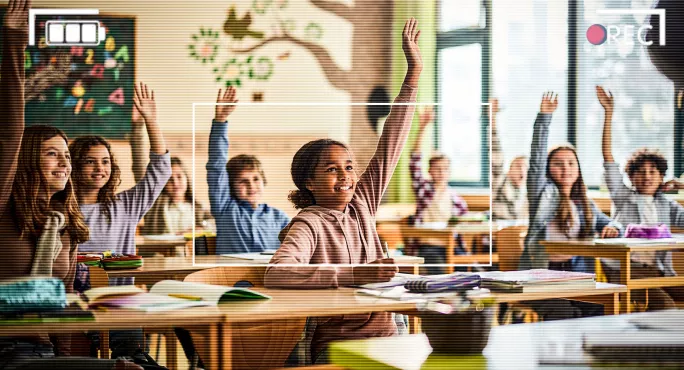
- Home
- Leadership
- Strategy
- How we use video to help pupils’ transition from primary
How we use video to help pupils’ transition from primary

It’s well documented that starting secondary school can be a daunting experience for children - from learning the layout of a new and bigger site to having different learning expectations and workloads.
At Oakmoor School we have always looked for ways to reach out to children and their families in nearby feeder primaries (many of which are within our trust, the University of Chichester Academy Trust) from Year 3 onwards to address these sorts of issues with transition.
This means inviting them to open days and letting them use our sports facilities, through to working to strengthen curriculum transition, including by getting staff from primaries to visit our school so they fully understand the difference in expectations between Year 6 and Year 7.
However, in the summer of 2020 we couldn’t do all of our usual Year 6/7 transition work and activities because of the pandemic. So we had to think outside of the box.
We realised, though, that as we had an Oakmoor YouTube channel already set up for online lessons, we could use this for the upcoming Year 6s.
Video tours to help transition
So we recorded a video introduction from the headteacher, who gave a 10-minute walking video tour of the school. It showed children the reception area and courtyard, as well as the sports fields and pitches before moving into the classroom areas.
The video also introduced the Year 6s to all the different types of classrooms in a secondary school, such as computer science suites, food and nutrition classrooms, design and technology rooms, science laboratories and English and mathematics rooms.
More on primary to secondary transition:
- Five tips for supporting primary-secondary transition
- Transition: what matters most for students?
- We made Year 6 more like Year 7 - and it’s helped transition
The sports hall, dance studio, theatre and dining hall were also included in the video, and we even borrowed a drone from our head of design and technology, who filmed the school aerially so that pupils could get an idea of the layout and the expanse of the school.
We shared this video with our feeder primary schools to show to their pupils, and it was also available on our YouTube channel.
Although over the past few years we have, of course, returned to in-person tours, we still share the video every year with our feeder schools and the impact has been really positive. Pupils have ample opportunities to watch and rewatch it to help them really get a feel for the school.
Video lesson insights
Furthermore, in a second project with videos, we asked each of our departments to design a special lesson that would engage and inspire Year 6 children as part of their transition.
The aim was that pupils could not only see the classrooms and the facilities within the department but also the sorts of things they would learn in secondary school.
The feedback we received from the primary schools was really positive, with teachers saying that the Year 6s benefitted from experiencing a secondary school lesson while being in the familiar setting of their primary classroom.
As well as this, each video was supported by a digital work booklet with a page that linked to each subject and some work to do.
For example, for history, the booklet asks pupils to do some research about the strong history of the military in our area; for English, the children have some creative writing tasks around describing fierce creatures; and for architecture and design, they design their dream house.
While this is not something that children have to do, we encourage them to participate so that we can provide this work to their future Year 7 teachers, who can later compare this work from Year 6 with the work the pupils go on to produce, helping them to see if they are improving as required.
These videos are really helpful not just for the pupils but also for the primary teachers we work with, who can see how the work they are doing in primary links to secondary lessons - and the level of change the pupils will encounter.
Overall, the use of video has been a huge benefit in helping to smooth pupils’ transition into our school - helping them to feel less anxious, more prepared and hopefully more excited about the next stage of their journey.
Nigel Wright is headteacher and Adam Beere is assistant headteacher at Oakmoor School in Bordon, Hampshire, part of the University of Chichester Academy Trust
For key school and trust leadership insights delivered every month, sign up for the Tes Leaders’ Briefing newsletter
You need a Tes subscription to read this article
Subscribe now to read this article and get other subscriber-only content:
- Unlimited access to all Tes magazine content
- Exclusive subscriber-only stories
- Award-winning email newsletters
- Unlimited access to all Tes magazine content
- Exclusive subscriber-only stories
- Award-winning email newsletters
You need a subscription to read this article
Subscribe now to read this article and get other subscriber-only content, including:
- Unlimited access to all Tes magazine content
- Exclusive subscriber-only stories
- Award-winning email newsletters
- Unlimited access to all Tes magazine content
- Exclusive subscriber-only stories
- Award-winning email newsletters
topics in this article



